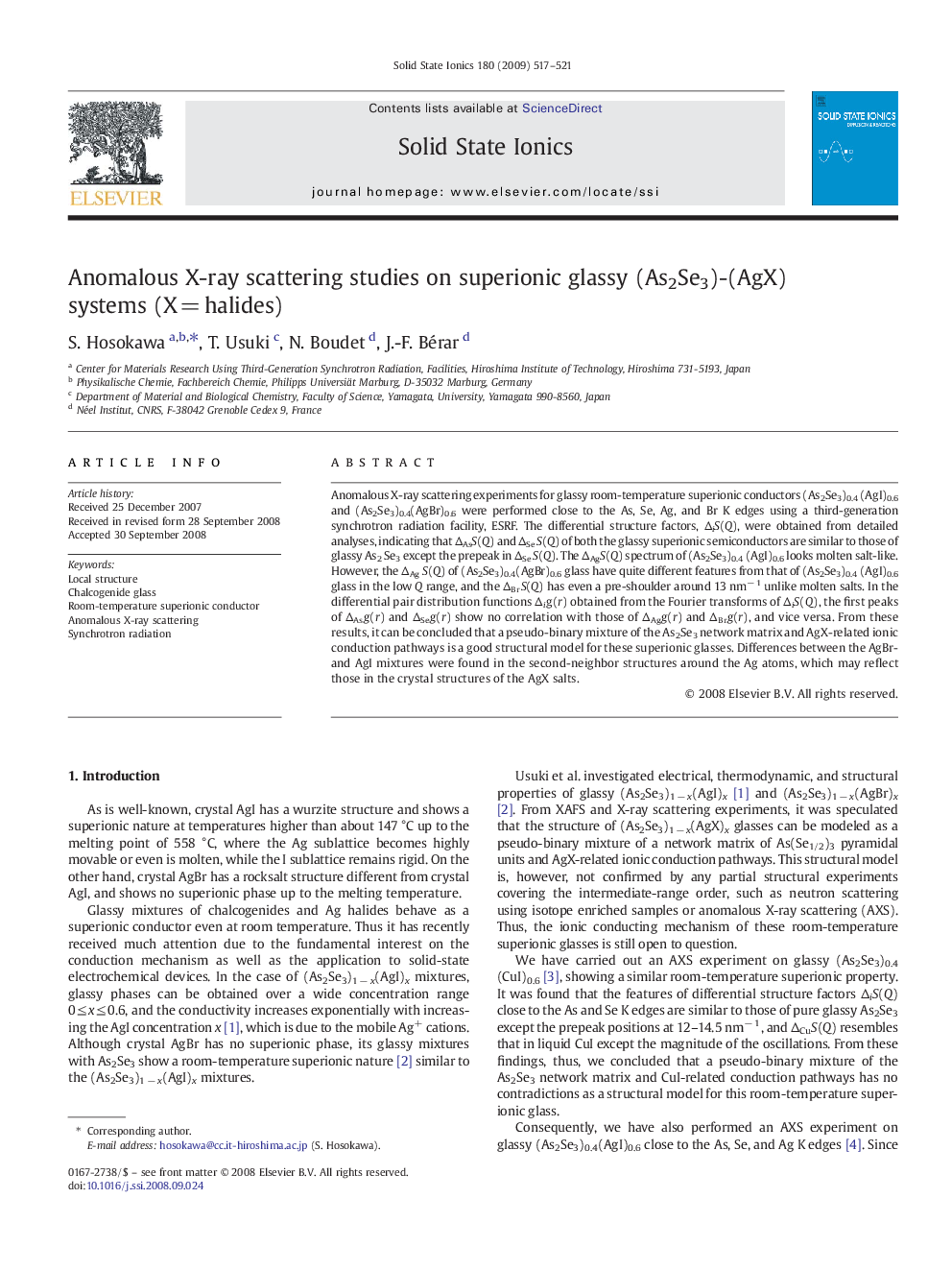| Article ID | Journal | Published Year | Pages | File Type |
|---|---|---|---|---|
| 1297868 | Solid State Ionics | 2009 | 5 Pages |
Abstract
Anomalous X-ray scattering experiments for glassy room-temperature superionic conductors (As2Se3)0.4 (AgI)0.6 and (As2Se3)0.4(AgBr)0.6 were performed close to the As, Se, Ag, and Br K edges using a third-generation synchrotron radiation facility, ESRF. The differential structure factors, ÎiS(Q), were obtained from detailed analyses, indicating that ÎAsS(Q) and ÎSeS(Q) of both the glassy superionic semiconductors are similar to those of glassy As2 Se3 except the prepeak in ÎSeS(Q). The ÎAgS(Q) spectrum of (As2Se3)0.4 (AgI)0.6 looks molten salt-like. However, the ÎAgS(Q) of (As2Se3)0.4(AgBr)0.6 glass have quite different features from that of (As2Se3)0.4 (AgI)0.6 glass in the low Q range, and the ÎBrS(Q) has even a pre-shoulder around 13 nmâ 1 unlike molten salts. In the differential pair distribution functions Îig(r) obtained from the Fourier transforms of ÎiS(Q), the first peaks of ÎAsg(r) and ÎSeg(r) show no correlation with those of ÎAgg(r) and ÎBrg(r), and vice versa. From these results, it can be concluded that a pseudo-binary mixture of the As2Se3 network matrix and AgX-related ionic conduction pathways is a good structural model for these superionic glasses. Differences between the AgBr- and AgI mixtures were found in the second-neighbor structures around the Ag atoms, which may reflect those in the crystal structures of the AgX salts.
Related Topics
Physical Sciences and Engineering
Chemistry
Electrochemistry
Authors
S. Hosokawa, T. Usuki, N. Boudet, J.-F. Bérar,
